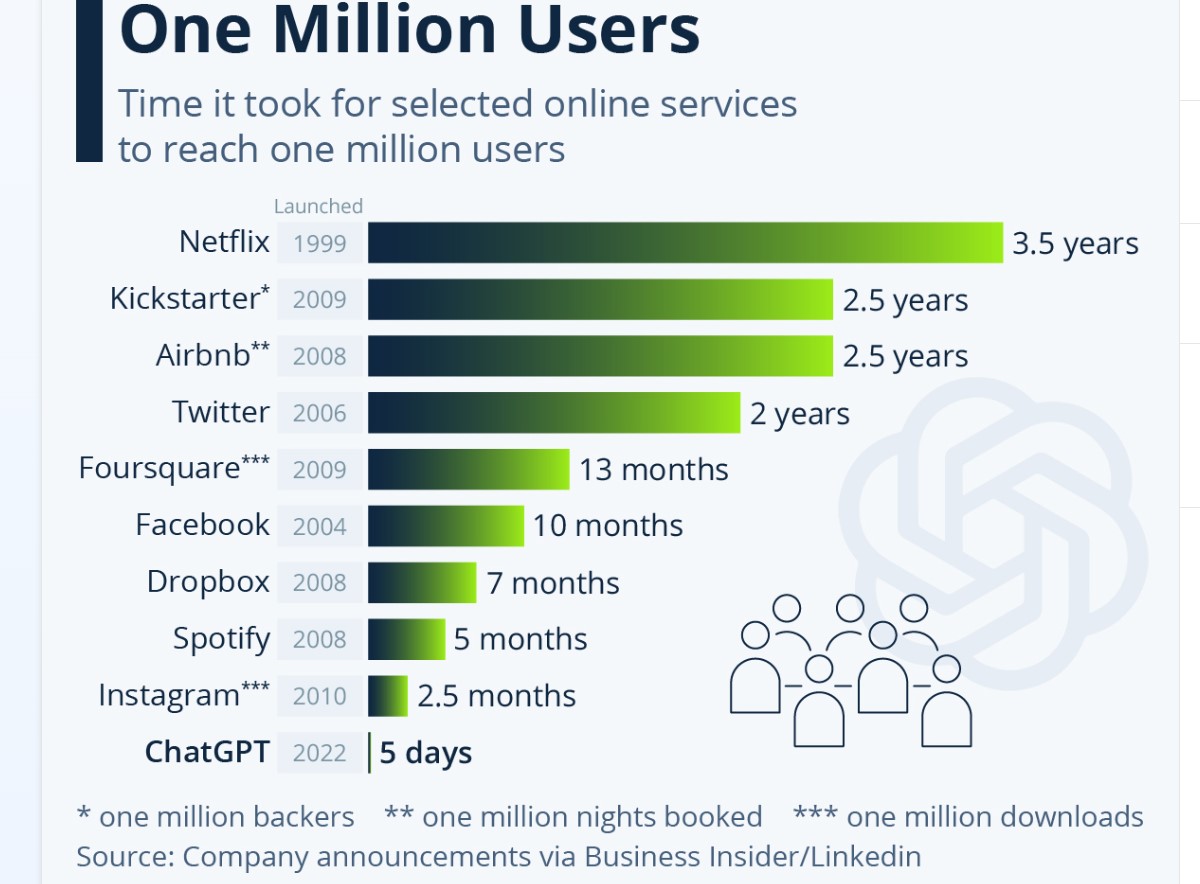I hate the phrase “Change is hard.” It’s a stupid statement that teaches people to fear change and resist. Consider that the AI tool ChatGTP cracked one million users within five days of launch. That’s rapid adoption – faster than any other app. Not hard at all for many people. We adapt all of the time. Have you?
There’s no denying that the launch of ChatGTP and similar AI offerings have brought massive change to the masses. This is clearly not a fad. We can’t put the genie back in the bottle; It’s too darn useful.
I dabbled with the product months ago out of curiosity, but what really captured my interest was when a colleague said she just kept it open for “consultation” during the day. Huh. So basically any time I was asked a question, I could ask ChatGTP for its thoughts. Simple enough. I gave it a shot…
A client asked me about the role of the sponsor when leading transformation. I have a good sense of what executive sponsors should do, but I put the question to ChatGTP:
“The role of a sponsor during change is to provide support and leadership throughout the change process. The sponsor is typically a senior leader within an organization who has the authority and influence to champion the change effort and ensure its success. Some of the specific responsibilities of a sponsor during change may include:
1. Establishing the need for change: The sponsor should communicate the reasons for the change and why it is necessary.
2. Setting the vision: The sponsor should provide a clear and compelling vision of what the future will look like after the change has been implemented.
3. Providing resources: The sponsor should allocate the necessary resources, including funding, personnel, and technology, to support the change effort.
4. Removing barriers: The sponsor should identify and remove any barriers that may hinder the change effort, such as resistance from employees or lack of buy-in from stakeholders.
5. Monitoring progress: The sponsor should track progress and ensure that the change is proceeding according to plan.
6. Celebrating success: The sponsor should recognize and celebrate milestones and achievements throughout the change process to maintain momentum and motivation.”
I posted it for my change colleagues in ACMP and we agreed it was quite accurate (with a few suggestions). So instead of digging up old files or researching a few good sources on the web, ChatGTP gave me a running start in the span of 30 seconds. That’s a useful time savings!
Concerned about the sources it’s using (a reasonable caution)? Just ask “What are your sources?” and it will list them for you. Want to know more about a specific point? Ask a follow-up question: “Give me some ideas for celebrating success” and BOOM you’ve got them.
I agree that we need to be careful with new tools. Just like we need to be careful with security when we use social media. Do check the sources. Gut check the content – does it sound reasonable? Get a second opinion.
Walk carefully, but certainly don’t run away. As a leader, you can demonstrate your willingness to flex, learn, and change by trying new things. Give ChatGTP a try and show them change is not hard.
Still need some help getting the message out? I asked, “How can leaders help people adapt to a world with AI?”:
“As AI continues to become more prevalent in the workplace, leaders have a critical role in helping people adapt to a world with AI. Here are some ways in which leaders can help:
Communicate the benefits of AI: Leaders should communicate the benefits of AI to their employees, such as increased efficiency, improved accuracy, and reduced costs. They should also emphasize that AI is not intended to replace people but to augment their work and help them be more productive.
Provide training and resources: Leaders should ensure that their employees have the necessary training and resources to work with AI effectively. This could include providing access to AI tools and technologies, offering training programs on how to use them, and encouraging employees to upskill and reskill to keep pace with the changing workplace.
Foster a culture of innovation: Leaders should encourage a culture of innovation that encourages experimentation and risk-taking. They should create an environment where employees feel comfortable sharing their ideas and testing new approaches, including those involving AI.
Address concerns and fears: Leaders should address any concerns or fears that employees may have about the impact of AI on their jobs. This includes being transparent about the implementation of AI, explaining the intended outcomes, and providing reassurance that AI is not intended to replace people.
Address ethical considerations: Leaders should also address ethical considerations associated with the use of AI. This includes ensuring that AI is used in a responsible and ethical manner and that it does not result in any harm to employees, customers, or other stakeholders.”
If AI can help us help people transition faster through change, then it’s an assist I will continue to use.
Thoughtfully yours,
Jeff Skipper



